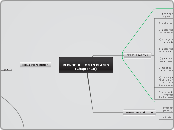REPRODUCTION IN PLANTS
(Chapter 16)
sexual reproduction
in flowering plants
Pollination
Cross-Pollination
DISADVANTAGES:
-2 parent plants needed
-have to depend on external factors ; insects, wind
-more energy +pollen wasted than self-pollination
ADVANTAGES:
-Offspring may inherited beneficial qualities from both parents
-more seeds produced > longer survival b4 germination
-higher genetic variations > increases chance of survival of the changing environment
FEATURE OF C.P PLANTS:
-stima & anthers mature @ diff timings
-stigma may be found further away than anthers
-DIOECIOUS plants bear either male OR female part so NO self polliination
Transfer of pollen grains from 1 plant to the stigma of a flower in another plant of the same kind.
feature> insects vs. wind pollination :
Petals > bright coloured petals : small & dull
nectar > present : absent
scent > sweet-smelling : absent
stigma > small&compact : large & feathery
pollen > large amount & surface : more+smooth
nectar guides > present : absent
Self-Pollination
DISADVANTAGES:
-Offspring may become weaker, smaller+ less resistant to dieseases
-Offspring the same as parents
-less adapted to changes in the environment
ADVANTAGES:
-1 parent plant needed
-not dependent on external factors ; insects, wind for pollination
-less energy require than cross-pollination
FEATURES OF S.P PLANTS:
-have male & female parts maturing @ the same time
-stigma found right below anther
Transfer of pollen grains from anther to stigma of diff/same flower of the SAME plant
parts of plants:
sepal->enclose + protect the flower in the bud stage.
FEMALE PARTS:
Carpel (pistil) : consist of ovary, style & stigma
Style:
-connects stigma to ovary
-holds stigma to trap pollen grains
Ovary:
-contains 1/>1 ovules
female gamete:
[ovum]
-produced by meiosis-> haploid
-ovule attach to placenta by a stalk (funicle)
Stigma:
-receives pollen grains
-secrete a sugary fluid > stimulate the pollen grain to germinate
MALE PARTS:
Stamen: consist of anther & filament. (androecia)
Pollen Grains:
-contain haploid no. of chromosomes
each pollen grain has 2 nuclei
>Generative nucleus
>Pollen Tube Nucleus(vegetative nucleus)
Filament: holds the anther to disperse pollens
-contains vascular bundle.
>pholem
>xylem
Anther:
-2 lobes-->2 pollen sacs
- produce pollen grains
petal: together make up COROLLA
insect pollinated:
-brightly colored
-platform for insects to land.
Receptacle: enlarge end of the flower
Pedicel:
-flower stalk
*flower w/o pedicel, attached at base.
this is called SESSILE
involves fusion of gametes to form a zygote, offspring diff from parents
produced in meiosis
asexual reproduction
mitosis occurs during this period
production of genetically identical offspring fron 1 parent , w/o the fusion of gametes
FERTILISATION:
9) zygote divide & develop into embryo.
- endosperm nucleus divide & give rise to the food storage tissue (endosperm)
8) 1 male gametes fuses w/ ovum --> zygote(fertilisation).
-The other fuses w/ definitive nucleus to form the endosperm nucleus
7) tip of pollen tube absorbs sap, burst--> releasing 2 male gametes
6) generative nucleus divides into 2. pollen tube nuleus disintergrates
5) pollen tubes enters ovule thru opening called MICROPYLE
4) as it grows, secrete enzyme to digest
surrounding tissue--> penetrates thru the style
3) pollen tube nucleus control the passing in of the cytoplasm & 2 nuclei of the pollen grain
2) pollen tube grows out
1) pollen grains germinate--> sugary fluid secreted by stigma









